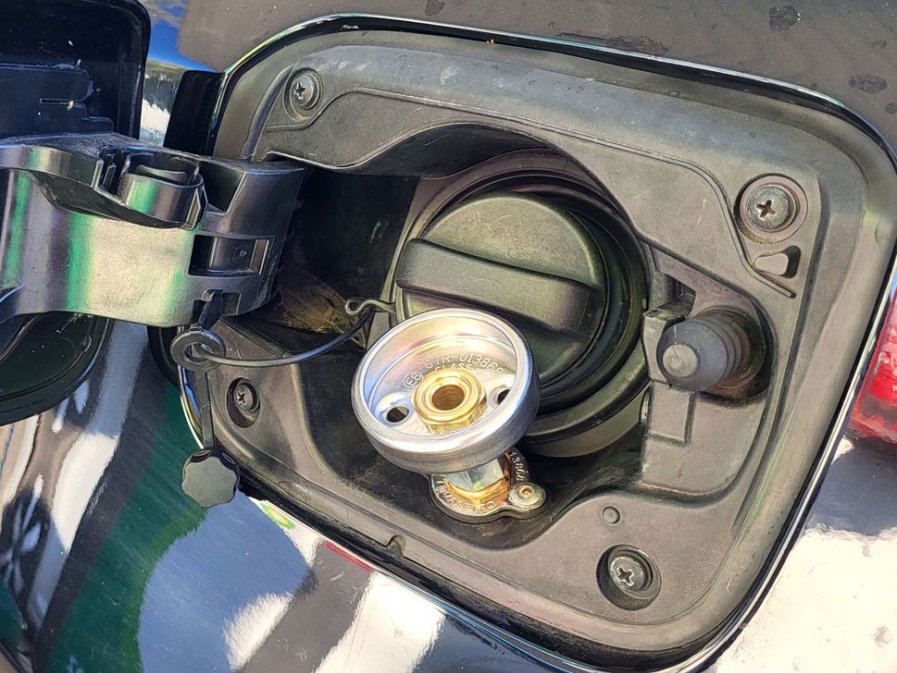Italian-Type LPG Filling Valves
In Poland and many other European countries, LPG filling valves (gas inlets) are used that are compatible with fuel station nozzles manufactured in the Italian standard (Italian Dish).
Operation of the LPG Filling Valve
The cup of the filling valve is shaped in such a way that it allows the nozzle at the filling station to be connected and sealed. Through the LPG filling valve, liquefied LPG from the station’s tank, via the dispenser and its connected nozzle hose, then through a rigid or flexible pipe and the multivalve, flows into the vehicle’s tank. The tank is usually installed in the spare wheel well, in the luggage compartment, or under the car.
Check Valve
Along the path through the LPG filling valve there are two check valves (one-way valves) that allow the flow of liquefied gas only in the direction of the vehicle tank. One of them is part of the multivalve on the tank. The other operates directly inside the LPG filling valve. It consists of a ball placed freely inside a spring that acts as a kind of cage for it (the spring does not act as an elastic element). The spring has its final coil bent inwards, which limits the movement of the ball inside the filling valve so that it does not block the LPG flow towards the tank, while still allowing it to close the outlet after the nozzle is disconnected at the filling station.
The pressure of the pumped LPG pushes the ball inward (its movement is limited by the inward-bent final coil of the spring), making flow through the filling valve towards the tank possible (the tank is filled). When refueling ends, the pressure inside the pipe between the filling valve and the tank (where the multivalve with the second check valve is located) presses the ball into its seat equipped with an O-ring, sealing the system and preventing LPG from leaking outward.
Basic Types of LPG Filling Valves
We distinguish two basic types of filling valves:
- standard
- extended
Standard LPG filling valves are one complete assembly, including the dish (Italian Dish) used for connecting the refueling nozzle. The dimensions of the dish often prevent the use of a standard (full) filling valve when the valve must be mounted next to the petrol filler under the fuel flap. In such cases, extended filling valves (without the dish) are used — they take up significantly less space and are much easier to install under the petrol filler flap. The dish in this solution becomes part of the adapter, which must be screwed into the extended filling valve for each refueling.
Why Does the LPG Filling Valve Sometimes Leak?
Failures or malfunctions of LPG filling valves are very rare. They most often manifest as gas leaks, which occur due to wear of the valve seals (the O-ring sealing the ball) or the ball itself (corrosion, pitting), which opens and closes the gas flow towards the LPG tank.
There are also cases of damage to the spring (acting as a cage for the ball), where the inward-bent final coil may deform further inward. This causes the ball to move deeper, restricting the flow of LPG and increasing refueling time, or even making it impossible to refuel at all.

